 by "ttyymmnn" (ttyymmnn)
by "ttyymmnn" (ttyymmnn)
Published 09/13/2017 at 12:35
 by "ttyymmnn" (ttyymmnn)
by "ttyymmnn" (ttyymmnn)
Published 09/13/2017 at 12:35
Tags: wingspan
; planes you've (probably) never heard of
; Planelopnik
STARS: 10
From the Planes You’ve (Probably) Never Heard Of Department of Wingspan , we bring you the Grumman XF5F Skyrocket (and the Grumman XP-50 for good measure).
!!! UNKNOWN CONTENT TYPE !!!

In the world of small military aircraft, there are two basic categories: fighters and interceptors. Fighters, as the name suggests, do just that. They meet enemy fighters and duke it out at altitude, or attack waves of incoming bombers, hopefully from above. Interceptors, on the other hand, are generally launched at the first sign of an attack and must be able to gain altitude quickly to meet approaching threats. Rate of climb is everything. During WWII, the US Navy had plenty of single-engine fighters, but they didn’t have a true interceptor. Seeing a need to be filled, the Grumman Corporation proposed a rather odd looking aircraft, one they hoped would become the Navy’s first twin-engine interceptor.*

Twin-engine fighters were nothing new. The Lockheed P-38 Lightning had been beating up the skies over Europe and the Pacific since 1941, and the de Havilland Mosquito practically defined the category of lightweight twin-engine fighter, putting the most powerful engines available into the lightest airframe possible. For the Skyrocket, Grumman proposed a fighter under 10,000 pounds maximum takeoff weight (by comparison, the P-38's MTOW was more than twice that) and powered by a pair of 1,200 hp Wright R-1820 Cyclone 9-cylinder radial engines. To negate the problems associated with engine torque found in single-engine fighters, the engines of the Skyrocket turned in opposite directions, greatly simplifying carrier takeoffs. But the XF5F’s most distinctive feature was its wing, placed forward of the fuselage, with its bulbous engine nacelles placed still farther forward. This arrangement provided excellent forward visibility, and made carrier landing easier, since the pilot’s view of the deck and the Landing Signal Officer was unobstructed. The Skyrocket was also the first Grumman aircraft to feature folding wings for carrier storage.
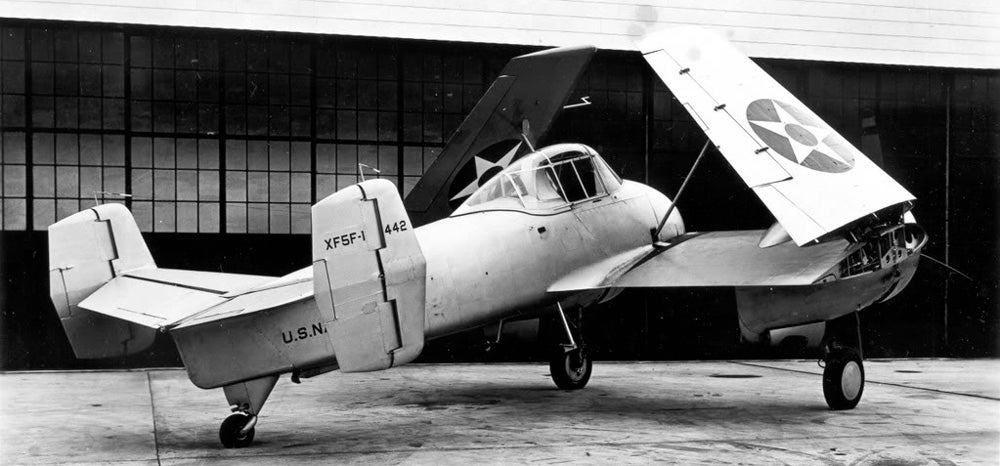
The Skyrocket took its maiden flight on April 1, 1940, and, in flight tests, it more than lived up to its name, and its light weight and powerful engines gave XF5F a climb rate of 4,000 feet per minute. When pitted against a bevy of contemporary fighters, including the Vought F4U Corsair , in a 10,000-foot climb, the Skyrocket left the Corsair in its wake. One Navy test pilot said, “I pulled away from the Corsair so fast I thought he was having engine trouble.” When the competition was completed, only the Supermarine Spitfire came in a distant second. In general, the Skyrocket performed well, though some redesigns were in order, and engine cooling issues persisted. It’s top speed of 383 mph, however, proved to be its Achilles heel. Ultimately, the Skyrocket lost out to the more traditional Grumman F4F Wildcat for mass production, in part because of a concern over the availability of spare parts and production difficulties associated with its twin-engine design.
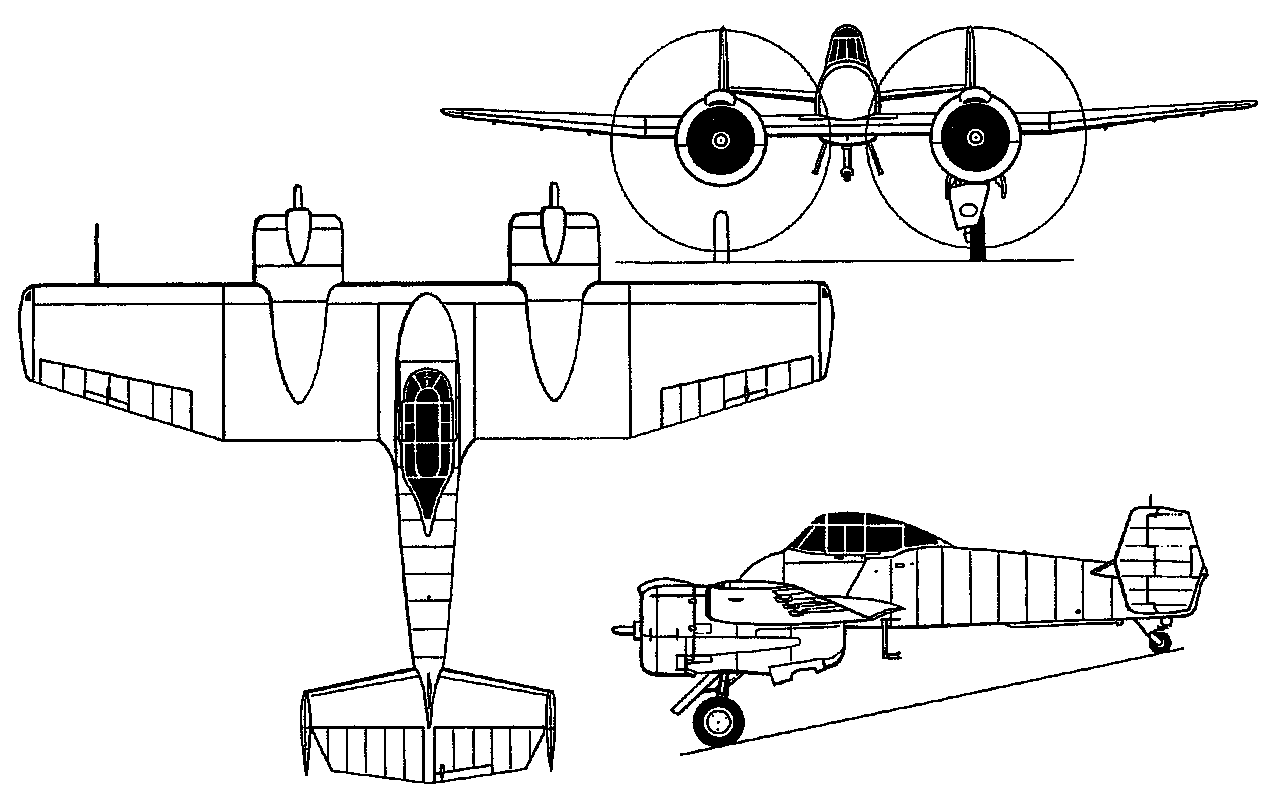
Grumman moved on from the Skyrocket to work on the F7F Tigercat , another twin-engine shipboard fighter, but that wasn’t the end of the Skyrocket. Grumman used it as the basis for the XP-50 , a redesigned variant with a more traditional fuselage that was pitted against the Lockheed XP-49 , a slightly smaller variant of the P-38 Lightning. In a competition, the Lockheed design was selected over the XP-50, though neither aircraft entered production. The Skyrocket continued in a testing role until a landing gear failure in 1944 saw it struck from the list of active aircraft and the single prototype was lost to history. The sole XP-50 prototype was destroyed in a crash when a turbo-supercharger blew up during a test flight.

*The Skyrocket was not the US Navy’s first twin-engine aircraft. That distinction goes to the
Douglas XT2D-1
, a twin-engine biplane bomber that took its first flight in 1927 but served mostly as a land-based bomber until 1933.
!!! UNKNOWN CONTENT TYPE !!!
!!! UNKNOWN CONTENT TYPE !!!
!!! UNKNOWN CONTENT TYPE !!!
!!! UNKNOWN CONTENT TYPE !!!
!!! UNKNOWN CONTENT TYPE !!!
!!! UNKNOWN CONTENT TYPE !!!
!!! UNKNOWN CONTENT TYPE !!!
If you enjoy these posts, please join in the conversation and let me know. If you missed an episode, you can find them all at
Wingspan
. Other aircraft also-rans can be found at
Planes You’ve (Probably) Never Heard Of
.
!!! UNKNOWN CONTENT TYPE !!!
 "For Sweden" (rallybeetle)
"For Sweden" (rallybeetle)
09/13/2017 at 12:45, STARS: 2
Pancake > Skyrocket
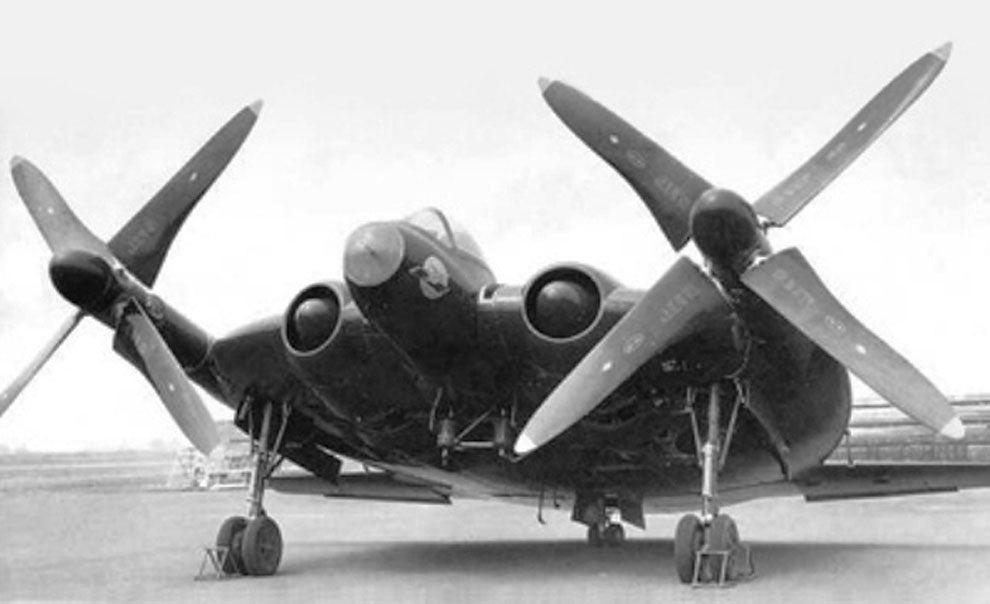
 "ttyymmnn" (ttyymmnn)
"ttyymmnn" (ttyymmnn)
09/13/2017 at 12:53, STARS: 0
That photo doesn’t look entirely legit....
 "Chariotoflove" (chariotoflove)
"Chariotoflove" (chariotoflove)
09/13/2017 at 12:55, STARS: 0
Why does it always seem to me that Grumman came up with the stubbiest, funky-looking designs?

09/13/2017 at 12:56, STARS: 2
Yes!

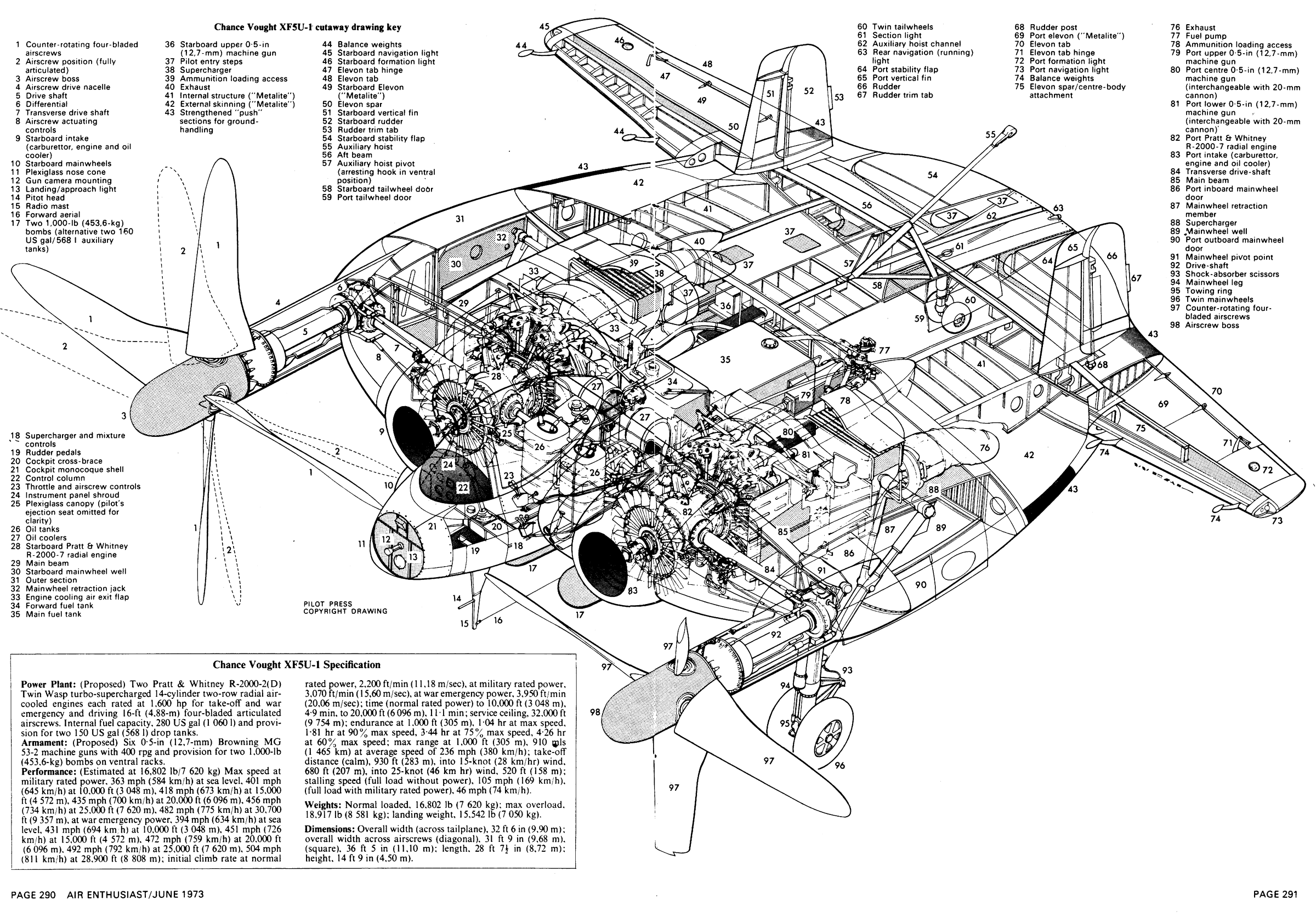
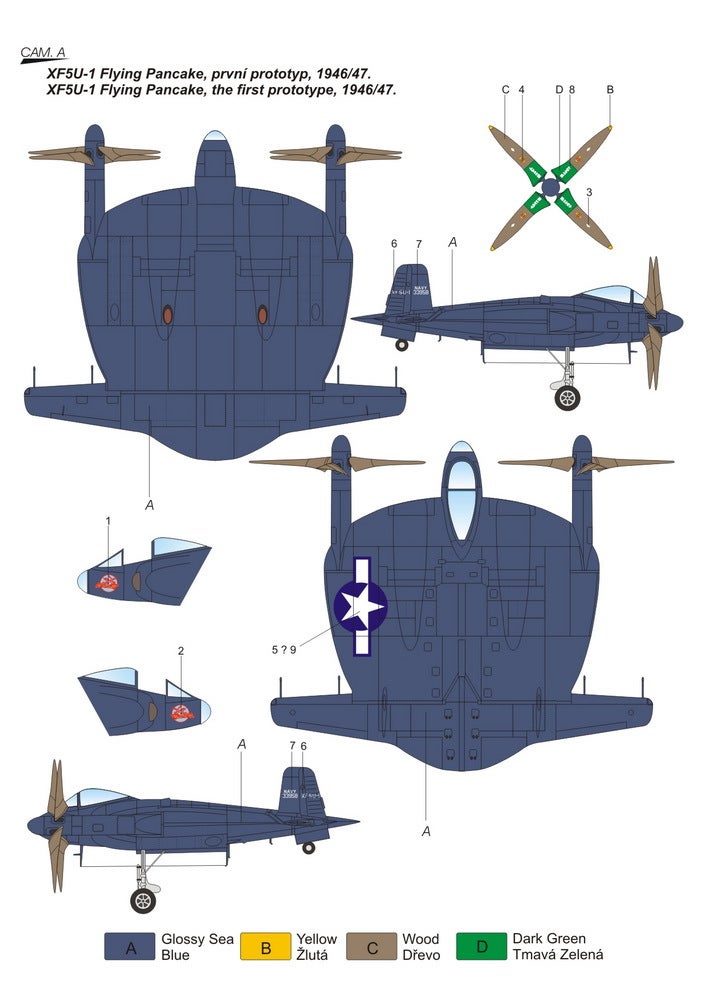
 "For Sweden" (rallybeetle)
"For Sweden" (rallybeetle)
09/13/2017 at 12:56, STARS: 1
It’s a still from the Captain America movie that should have been made.
 "Chariotoflove" (chariotoflove)
"Chariotoflove" (chariotoflove)
09/13/2017 at 13:00, STARS: 1
It doesn’t to me either, but a quick google of “pancake plane” came up with the Vought V-173 , which looks equally unlikely.
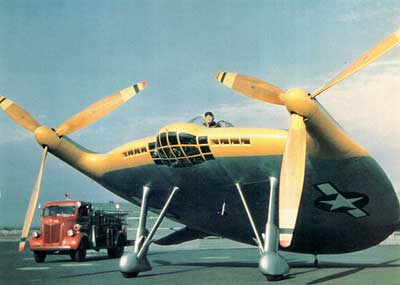
For Sweden’s pic is of the XF5U , which apparently never flew according to this website:
It is a great disappointment that the Vought XF5U-1 never flew. When a test prototype, the V-173 , took to the air it was unique. The V-173 and the XF5U-1 fighter were based upon a wing of circular shape, which was also the ‘fuselage’.
Designed to be capable of vertical take-off and landing, as well as very high-speed flight, the ‘Flying Pancake’ used a very low aspect ratio wing offering high efficiency. This design was the brainchild of Charles Zimmerman, who had been researching such shapes since 1933. The wood-and-fabric V-173 performed well in tests during 1942, proving stall-proof.
The all-metal XF5U-1 fighter, which used the same wing planform, would have gone further despite problems with its complex transmission. But, although the XF5U-1 was shipped to Muroc, California, for tests, it never flew. The jet age made propeller-driven fighters a thing of the past and the XF5U was scrapped.
 "X37.9XXS" (x379xxs)
"X37.9XXS" (x379xxs)
09/13/2017 at 13:12, STARS: 0
The aircraft name,however, went onto fame and glory

Also, co-starring as the Silver Dart in the Captain Midnight TV series

 "ttyymmnn" (ttyymmnn)
"ttyymmnn" (ttyymmnn)
09/13/2017 at 13:15, STARS: 1
Not sure. This was an interesting time. The Army was in the midst of their R-40C request. They feared that enemy designs might soon outpace American aircraft, so they pushed the aircraft companies to come up with radical new aircraft. R-40C gave us the Vultee Swoose Goose, the Northrop Black Bullet and the Curtiss Ascender (“ass-ender”), all of which were funky and none of which entered production. I think Grumman may have been trying to think outside the box on this one.
 "ttyymmnn" (ttyymmnn)
"ttyymmnn" (ttyymmnn)
09/13/2017 at 13:16, STARS: 0
But that’s the Douglas Skyrocket......
 "X37.9XXS" (x379xxs)
"X37.9XXS" (x379xxs)
09/13/2017 at 13:19, STARS: 0
But it’s the Focke-Wulf Mosquito
https://en.wikipedia.org/wiki/Focke-Wulf_Ta_154
 "ttyymmnn" (ttyymmnn)
"ttyymmnn" (ttyymmnn)
09/13/2017 at 13:19, STARS: 1
I had seen the V-173, but not the XF5U. Apparently it really was a thing.
 "ttyymmnn" (ttyymmnn)
"ttyymmnn" (ttyymmnn)
09/13/2017 at 13:20, STARS: 0
Imitation is the sincerest form of flattery.
 "punkgoose17" (punkgoose17)
"punkgoose17" (punkgoose17)
09/13/2017 at 13:26, STARS: 0
This and the V-173 are may favorite airplanes. It is a shame they never figured out the vibration issues.
 "punkgoose17" (punkgoose17)
"punkgoose17" (punkgoose17)
09/13/2017 at 13:37, STARS: 0
I really like this one. The 2 engines forward of the fuselage remind me of a pod racer. So it was faster than the Wildcat, but still lost?
 "Chariotoflove" (chariotoflove)
"Chariotoflove" (chariotoflove)
09/13/2017 at 13:40, STARS: 1
It’s not pretty, but it’s seriously cool.
 "ttyymmnn" (ttyymmnn)
"ttyymmnn" (ttyymmnn)
09/13/2017 at 13:40, STARS: 3
Yeah, I think it was mostly down to the fact that they could build a shit-ton of Wildcats much faster than they could build these. So they went with quantity over quality.
The pod racer was not lost on me, either. :D
 "Bman76 (hates WS6 hoods, is on his phone and has 4 burners now)" (bman76-4)
"Bman76 (hates WS6 hoods, is on his phone and has 4 burners now)" (bman76-4)
09/13/2017 at 14:10, STARS: 2
Sir, I think you’ve built your Beech Starship backwards.